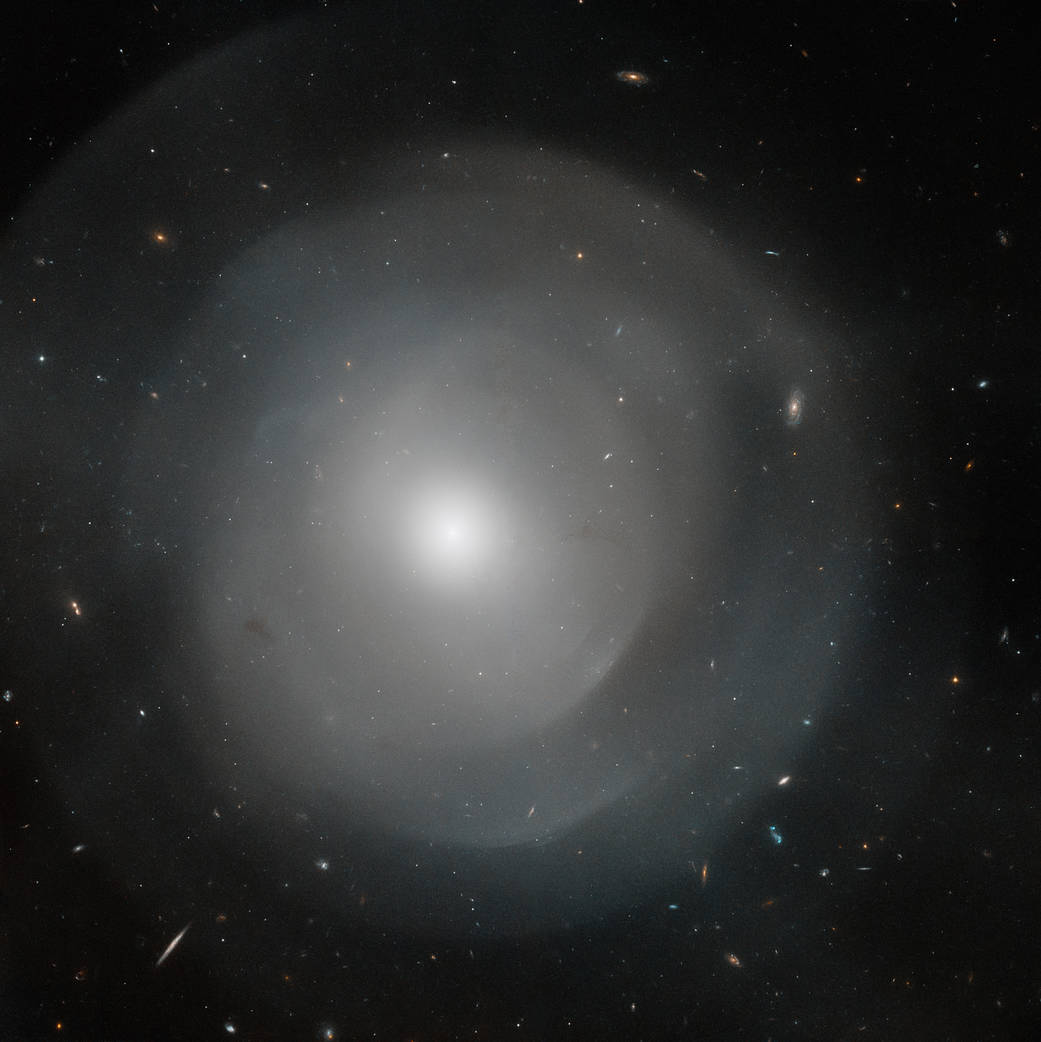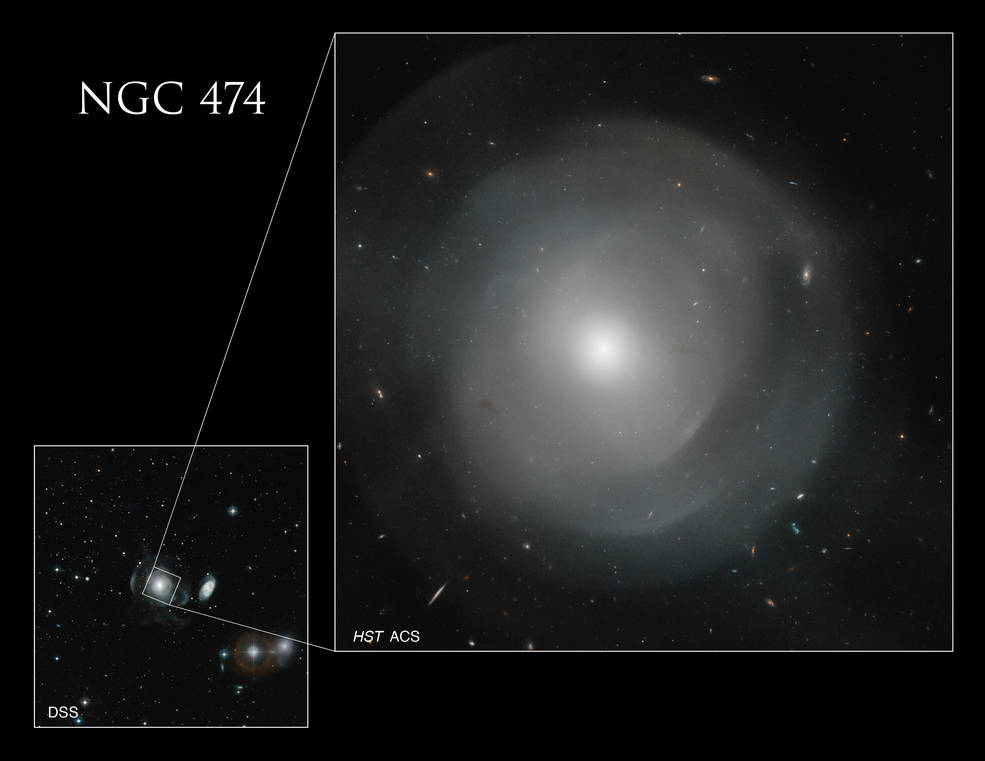This new NASA Hubble Space Telescope image captures the central region of the gigantic elliptical galaxy NGC 474. Located some 100 million light-years from Earth, NGC 474 spans about 250,000 light-years across – that’s 2.5 times larger than our own Milky Way galaxy! Along with its enormous size, NGC 474 has a series of complex layered shells that surround its spherical-shaped core. The cause of these shells is unknown, but astronomers theorize that they may be the aftereffects of the giant galaxy absorbing one or more smaller galaxies. In the same way a pebble creates ripples on a pond when dropped into the water, the absorbed galaxy creates waves that form the shells.
About 10% of elliptical galaxies have shell structures, but unlike the majority of elliptical galaxies, which are associated with galaxy clusters, shelled ellipticals usually lie in relatively empty space. It may be that they’ve cannibalized their neighbors.
The image was created using data from Hubble’s Advanced Camera for Surveys. Additional gap-filling data was provided by Hubble’s Wide Field and Planetary Camera 2 and Wide Field Camera 3. The color blue represents visible blue light while the color orange represents near infrared light.
这张新的NASA哈勃太空望远镜图像捕捉到了巨大椭圆星系NGC 474的中心区域。NGC 474距离地球约一亿光年,跨度约250,000光年,比我们银河系大2.5倍!NGC 474除了其巨大的尺寸外,还有一系列复杂的层状外壳围绕其球形核心。这些壳层的成因尚不清楚,但天文学家推测,它们可能是巨型星系吸收了一个或多个较小星系后的结果。就像一颗鹅卵石掉进水中会在池塘上产生涟漪一样,被吸收的星系会产生形成贝壳般的波浪。
约10%的椭圆星系具有壳层结构,但与大多数与星系团相关的椭圆星系不同,带壳的椭圆星系通常位于相对空旷的太空中。这可能是因为他们蚕食了他们的邻居。
这幅图像是使用哈勃高级测量相机的数据拍摄。哈勃的广角和行星照相机2和广角照相机3提供了额外的填补空白的数据。蓝色代表可见蓝光,橙色代表近红外光。
Most elliptical galaxies are associated with galaxy clusters, but NGC 474 is in a relatively empty part of space. Only a much smaller spiral galaxy, NGC 470, is nearby and visible in the Digital Sky Survey image above. This beautiful spiral will likely succumb to NGC 474’s gravitational pull billions of years from now, possibly creating even more complex shells around the giant elliptical.
Credits: NASA, ESA, D. Carter (Liverpool John Moores University), DSS; Image processing: G. Kober (NASA Goddard/Catholic University of America)
Main Image Credit: NASA, ESA, and D. Carter (Liverpool John Moores University); Image processing: G. Kober (NASA Goddard/Catholic University of America)
大多数椭圆星系都与星系团有关,但NGC 474位于相对空旷的太空。在上面的数字巡天图像中,附近只有一个小得多的螺旋星系NGC 470可见。数十亿年后,这个美丽的螺旋可能会屈服于NGC 474的引力,可能会在巨大的椭圆周围形成更复杂的壳层。
影像来源:NASA, ESA, D. Carter (Liverpool John Moores University), DSS; Image processing: G. Kober (NASA Goddard/Catholic University of America)
主要影像来源:NASA, ESA, and D. Carter (Liverpool John Moores University); Image processing: G. Kober (NASA Goddard/Catholic University of America)








